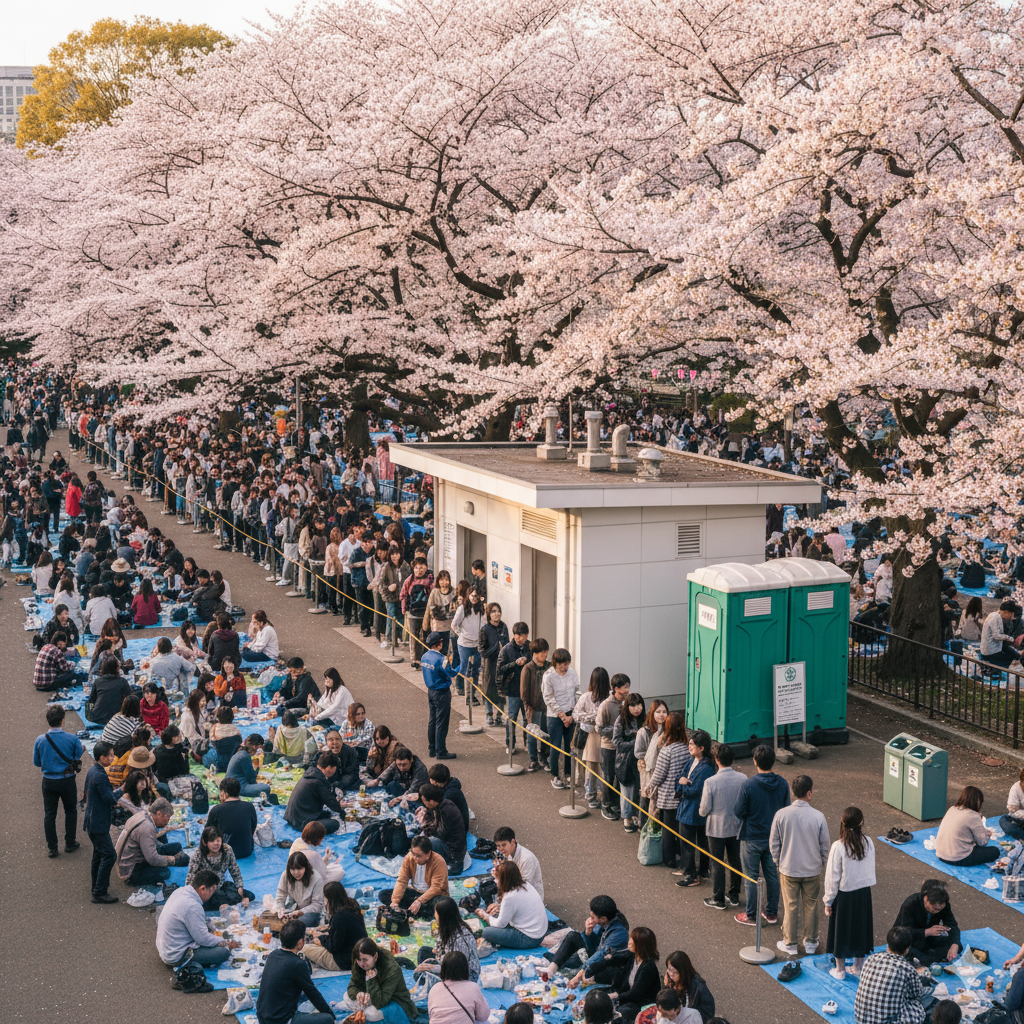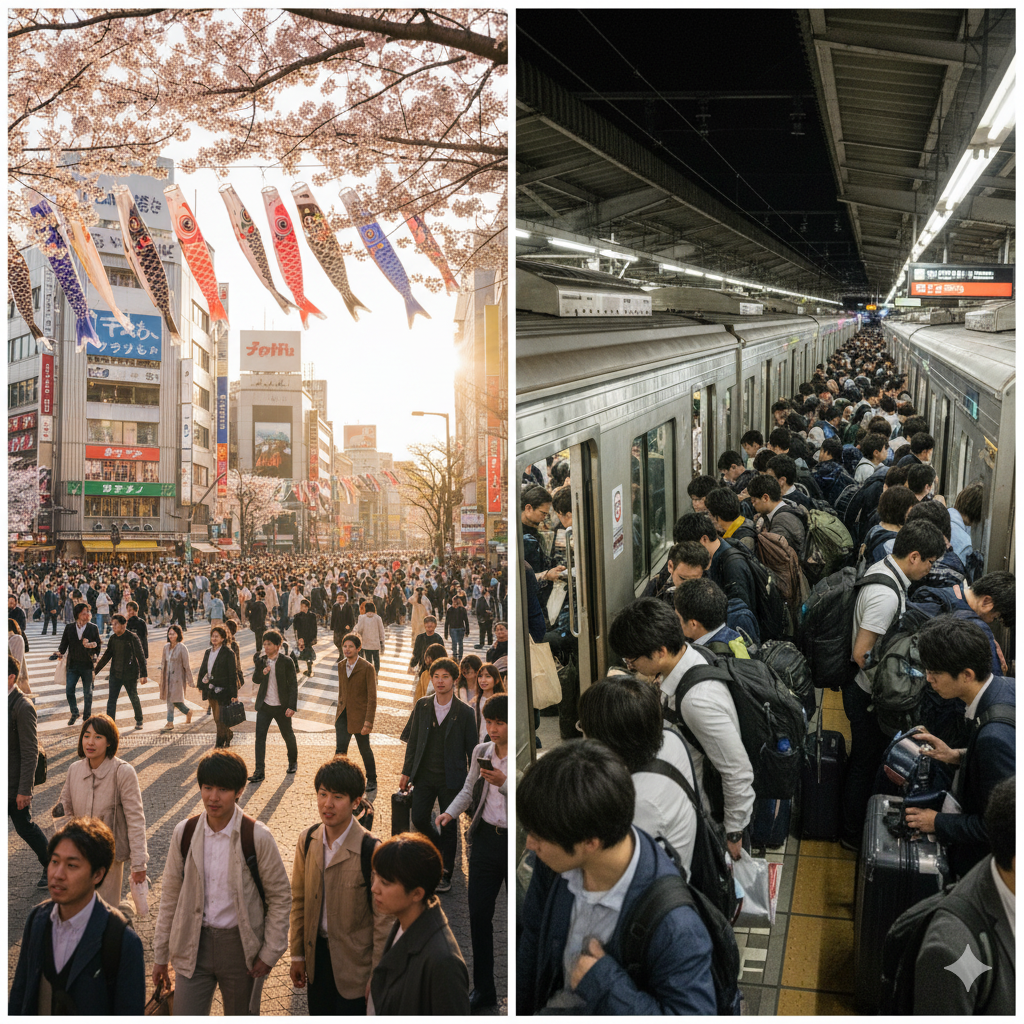Public Toilets During Hanami Season: Hidden, Crowded, or Surprisingly Clean?

Hanami, or cherry blossom viewing, is one of the most cherished spring traditions. Every year, parks such as Ueno Park in Tokyo, Maruyama Park in Kyoto, and Osaka Castle Park fill with picnickers enjoying food, drinks, and the fleeting beauty of sakura. Amid the festive atmosphere, one practical issue often catches visitors off guard: public toilets. With so many people gathered in the same place, finding and using toilets efficiently becomes part of the hanami strategy.
During peak weekends, public toilets in major parks can become extremely crowded, especially in the afternoon and early evening. Long queues form quickly, with women’s restrooms typically having the longest lines. Despite the crowds, Japan’s public facilities are generally well maintained even during busy seasons. Park staff and volunteers work throughout the day to restock toilet paper, clean the facilities, and manage lines. While waiting is unavoidable, filthy or neglected toilets are rare. The quietest times are usually early morning and late evening, when most visitors are still setting up or beginning to leave.
Many tourists head straight to the toilets closest to the main viewing areas, which causes congestion. In reality, most parks have several toilet blocks spread across the grounds, including near exits, playgrounds, or quieter corners. Ueno Park, for example, has toilets scattered around the zoo, museums, and side paths beyond the main cherry blossom avenue. Shinjuku Gyoen offers restrooms near lesser-used gates, while Osaka Castle Park has facilities along secondary walking trails. Checking the park map or using Google Maps beforehand can help you find these less obvious spots and avoid the worst lines.
Another surprise for many visitors is the consistently high standard of cleanliness. Even during massive events like hanami, most public toilets remain well equipped. Modern flush toilets with bidet functions are common, and toilet paper is typically provided—though carrying a backup pack is wise. Handwashing stations or automated sinks are standard, and many locations offer accessible toilets for elderly and disabled visitors. Newer facilities may include heated seats, diaper changing areas, and touchless flush systems. Older toilets are cleaned multiple times a day, keeping them serviceable despite heavy use.
When park toilets are overwhelmed, convenience stores offer a reliable alternative. Major chains like 7-Eleven, Lawson, and FamilyMart usually have clean, free-to-use toilets for customers. It’s considered polite to make a small purchase before or after using them. Train stations near large parks can also be good backup options, often with cleaner facilities and shorter lines than inside the park itself.
A few practical tips can make the experience smoother. Study the park map beforehand to locate all toilet facilities. Go early in the day to avoid peak crowds. Carry pocket tissues or wet wipes, just in case. Try to avoid using the toilets between 1:00 and 4:00 p.m., when lines are typically at their longest. Keep an eye out for nearby convenience stores and train stations in case you need a quick alternative. Also, pace your drinks—beer and sake are common at hanami, and overindulging can lead to extra trips to already crowded toilets.
Some of the largest hanami sites set up portable toilets to help manage the overflow. These temporary facilities are usually basic but clean and can be less crowded than permanent ones, especially if they’re positioned away from main gathering areas.
Public toilets during hanami season offer a mix of crowding, hidden gems, and impressive cleanliness. While lines are inevitable during peak times, Japan’s strong emphasis on hygiene and organization means the experience is far less chaotic than in many other countries. With a bit of preparation—knowing where to go, when to go, and what alternatives exist—you can enjoy your hanami day without unnecessary stress.



